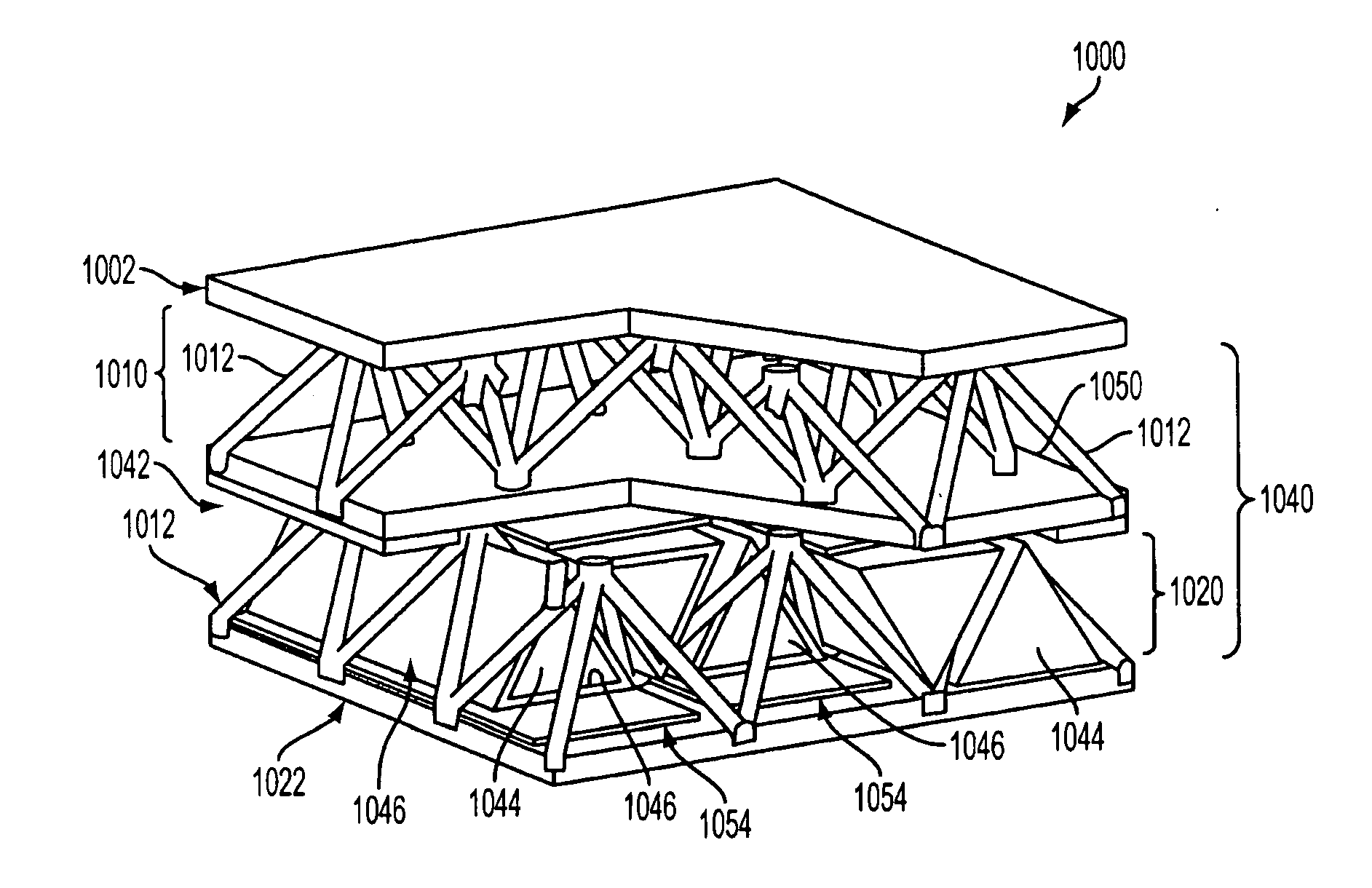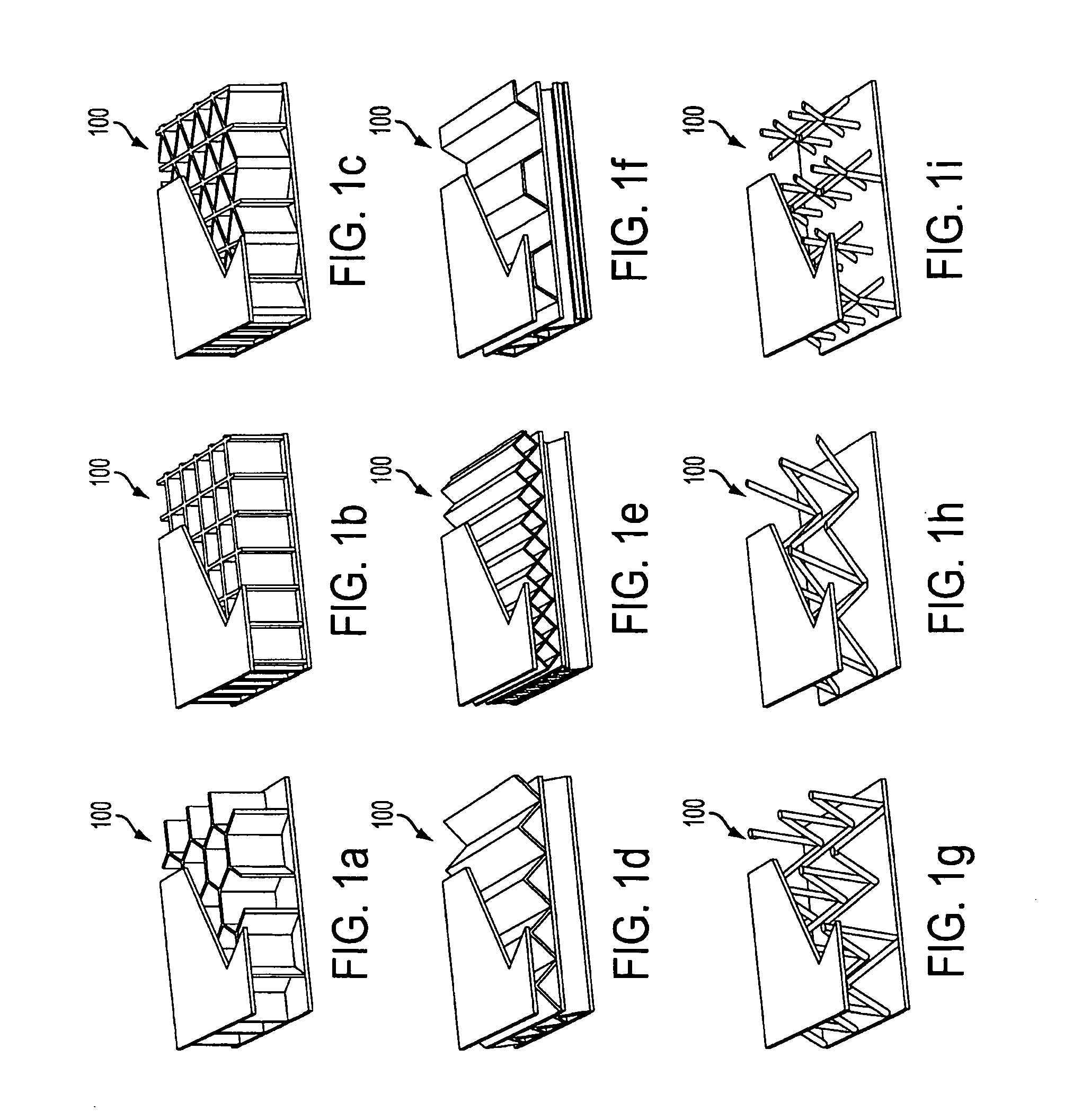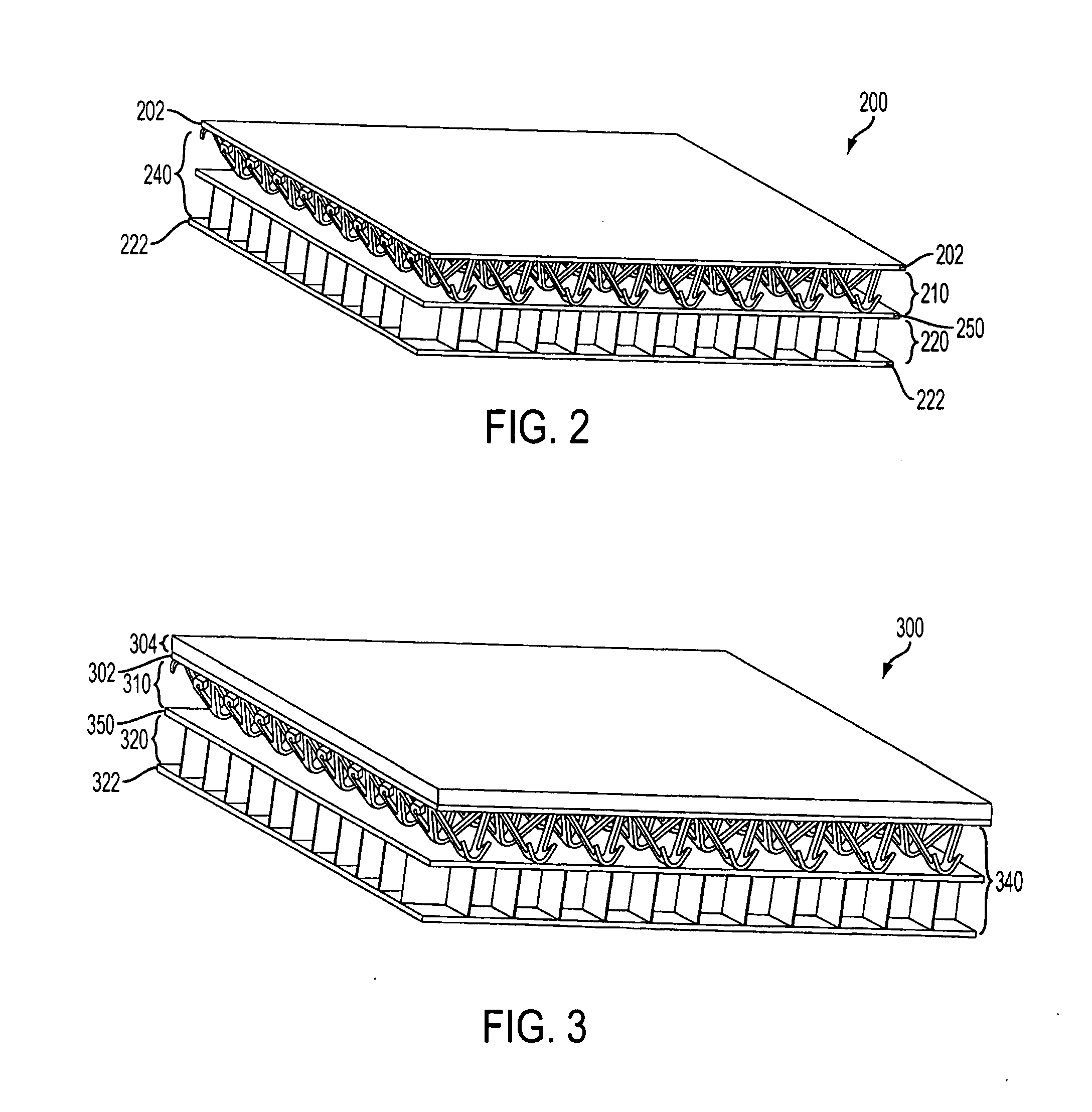Hybrid Periodic Cellular Material Structures, Systems, and Methods For Blast and Ballistic Protection
a periodic cellular material and hybrid technology, applied in the field of hybrid periodic cellular material structures, systems, and methods of blast and ballistic protection, can solve the problems of increasing complexity of vehicle and personnel's need for ballistic and blast protection, severe limitations for the most demanding structural and multifunctional applications, and very limited crush resistance of polymer and metal foam, etc., to achieve significant structural weight savings, improve structural efficiency, and improve the effect of structural strength and shear resistan
- Summary
- Abstract
- Description
- Claims
- Application Information
AI Technical Summary
Benefits of technology
Problems solved by technology
Method used
Image
Examples
Embodiment Construction
[0034]An aspect of various embodiments of the current invention provides, among other things, core combinations from the PCM family of material structures with hard ceramics and / or ballistic fabrics, a superior armor design can be created which also functions as a structural component (such as a vehicle door or floor). These structural components then provide, among other things, a light weight solution various blast and ballistic threats. An Exemplary approach is based upon multilayering to provide different properties as a function of depth within a sandwich panel. These layers can be added to provide a sandwich panel structure 200 to increase the type and level of protection. One example is shown in FIG. 2. The sandwich structure 200 comprises a first layer 210, a second layer 220 with an intermediate member 250 there between to form a core 240. On opposite sides of the sandwich structure 200 is a front panel 202 and a back panel 222. This particular, non-limiting example provide...
PUM
| Property | Measurement | Unit |
|---|---|---|
| blast pressure | aaaaa | aaaaa |
| open-cell lattice structure | aaaaa | aaaaa |
| lattice structure | aaaaa | aaaaa |
Abstract
Description
Claims
Application Information
 Login to View More
Login to View More - R&D
- Intellectual Property
- Life Sciences
- Materials
- Tech Scout
- Unparalleled Data Quality
- Higher Quality Content
- 60% Fewer Hallucinations
Browse by: Latest US Patents, China's latest patents, Technical Efficacy Thesaurus, Application Domain, Technology Topic, Popular Technical Reports.
© 2025 PatSnap. All rights reserved.Legal|Privacy policy|Modern Slavery Act Transparency Statement|Sitemap|About US| Contact US: help@patsnap.com



